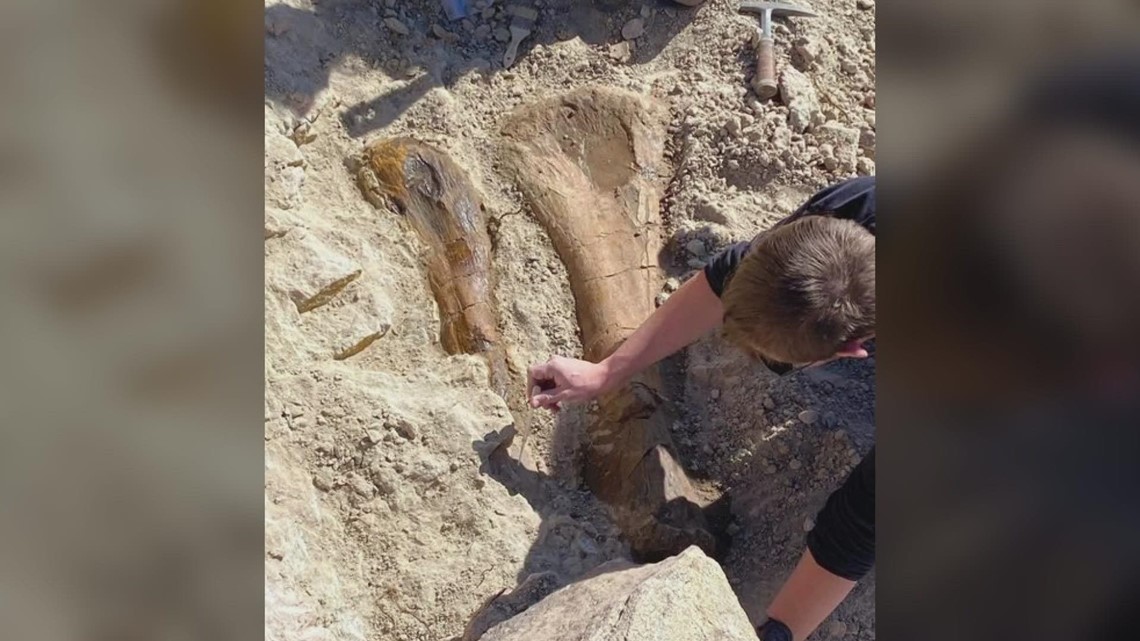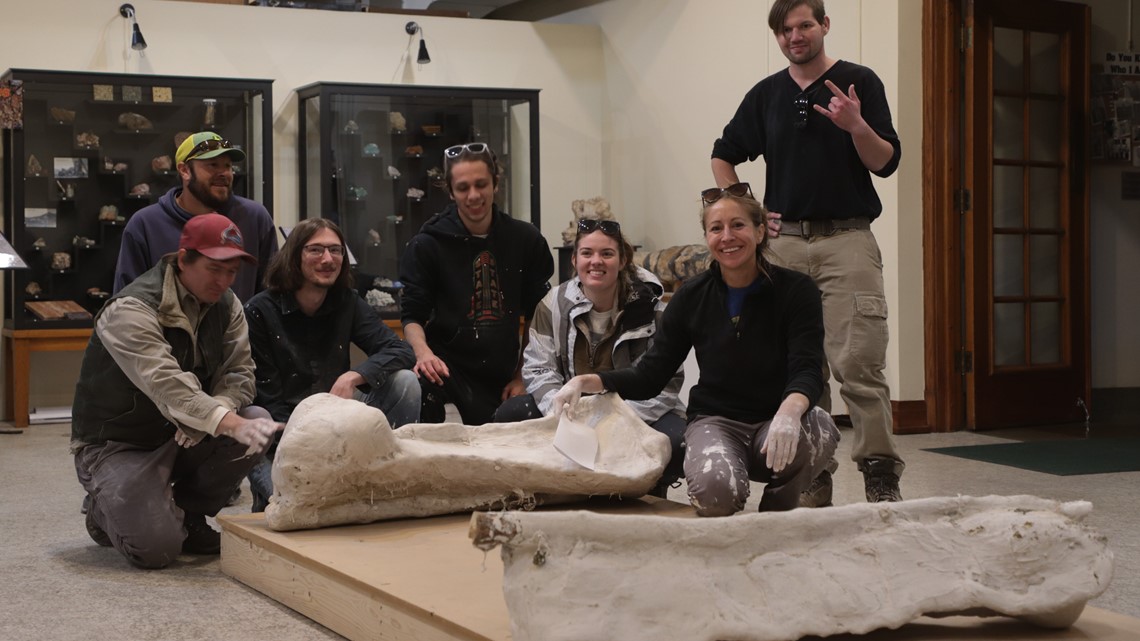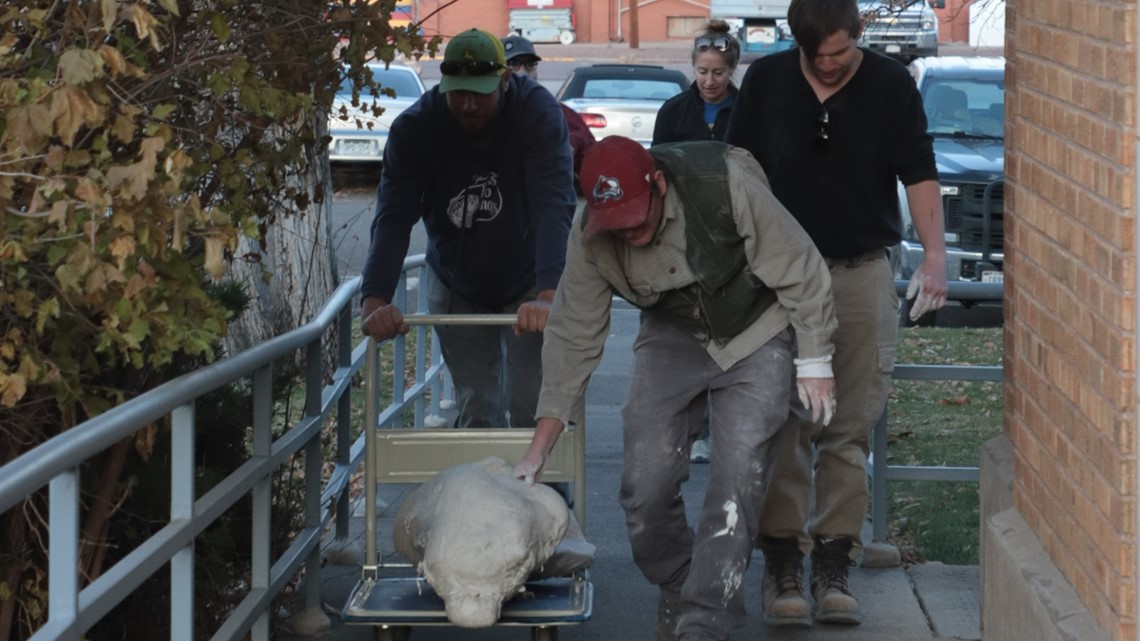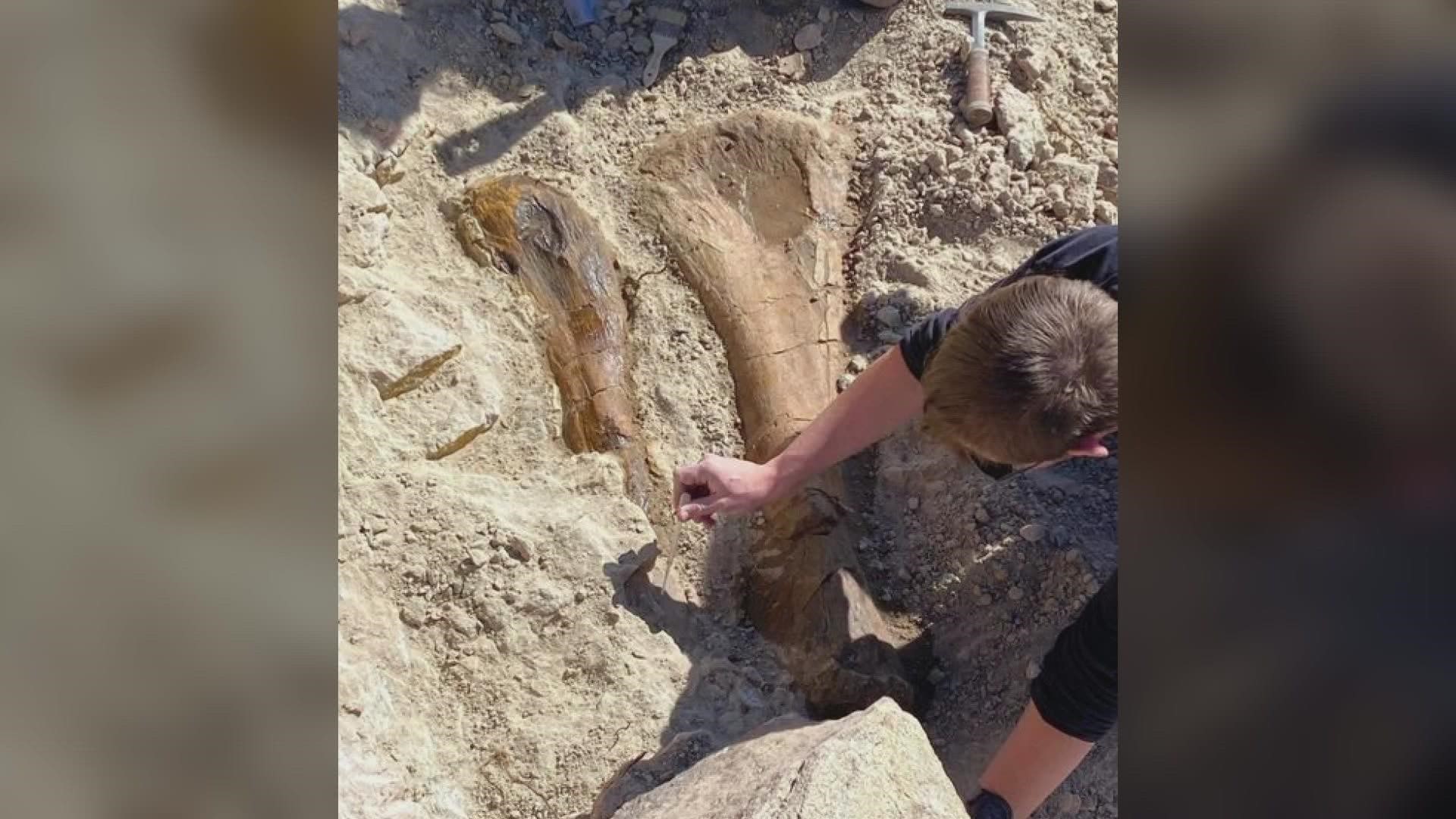CAÑON CITY, Colo. — A person hiking stumbled upon dinosaur fossils that have been held in rock for 170 million years in the Royal Gorge Region.
"We are known for those types of things so it's very possible people walk by a little something sticking out of the ground and not know what it is," said Lisa Studts Museum Director at the Royal Gorge Regional Museum and History Center.
Last year, a hiker knew that what he found was something special.
"There was a citizen who thought he found a fossil," said Studts. "He did the right thing. He contacted the Royal Gorge Field office for the Bureau of Land Management."
Studts said she hasn't spoken with the person who found the fossil so she couldn't say how he discovered it. After it was reported to the BLM, a paleontologist went to the area and confirmed there was indeed a "fossil of interest." The Denver Museum of Nature and Science (DMNS), the BLM and the museum, coordinated an excavation team that was sent out to carefully extract the fossils.


"It's pretty interesting. Initially they were only expecting to find one [bone] or part of one," said Studts. "They found a second one which was probably from the same animal."
It turned out to be a tibia and fibula, from a sauropod, which is a large-bodied herbivore dinosaur.
"It's not that rare for fossils being found in this area, what's interesting about this, is that these two fossils are all pretty much intact," said Studts."It's pretty much the whole bone."
Each bone is about a meter long, or just over three feet, according to Studts.


Intact skeletal remains are rare to find, and it is more rare to find them still oriented how they would have been when the animal was alive, according to the DMNS.
Studts said they'll be studied and they may eventually be able to determine the exact species of dinosaur or whether it was an older dinosaur or a juvenile. That could take some time though.
Personnel from the DMNS and BLM worked together to excavate and encase the fragile fossils in plaster jackets. That kept them intact so they could be transported to the Royal Gorge Museum for proper preparation and stabilization work.


Volunteers will work there to remove the fossils and stabilize them using special chemicals. The Museum & History Center has a grand fossil reveal planned for 10 a.m. Jan. 21. After that, the public is invited to watch as volunteers open the casts to begin the preparation process.
Volunteers with the Western Interior Paleontological Society (WIPS) along with museum paleo-volunteers will be working to prepare and preserve the fossils in the museum’s Program Room from 10 a.m. to 4 p.m. every Friday and Saturday over the next several weeks starting Jan. 21.
"We are having volunteers do the prep work and as they're doing that they're inviting the public to come down to the museum and watch them do their work and learn a little bit more about the process of how paleontologists prep fossils how they go about excavating fossils and what fossils can tell us."
Once that work is complete, the fossils will be permanently stored and displayed at the Royal Gorge Regional Museum & History Center. It's located in Cañon City’s former Municipal Building at 612 Royal Gorge Blvd. The Museum and History Center is open 10 a.m. to 4 p.m. Wednesday through Saturday. Admission is free.
For more information, please call the museum at 719-269-9036 or send an email to historycenter@canoncity.org.
The Royal Gorge Region is well known for its fossils, but these are the first intact dinosaur bones found in the area in a long time. The last major fossil discovery in the Royal Gorge Region was in 1992 with the excavation of Ms. Spike (as known as the Small Stegosaurus) and Tony’s Tree in 1998.
"It was excavated in 1998. The student who found that fossil or a piece of it, got to be involved in the excavation process and it's now known as Tony's tree in honor of him," said Studts.
SUGGESTED VIDEOS: Feature stories

